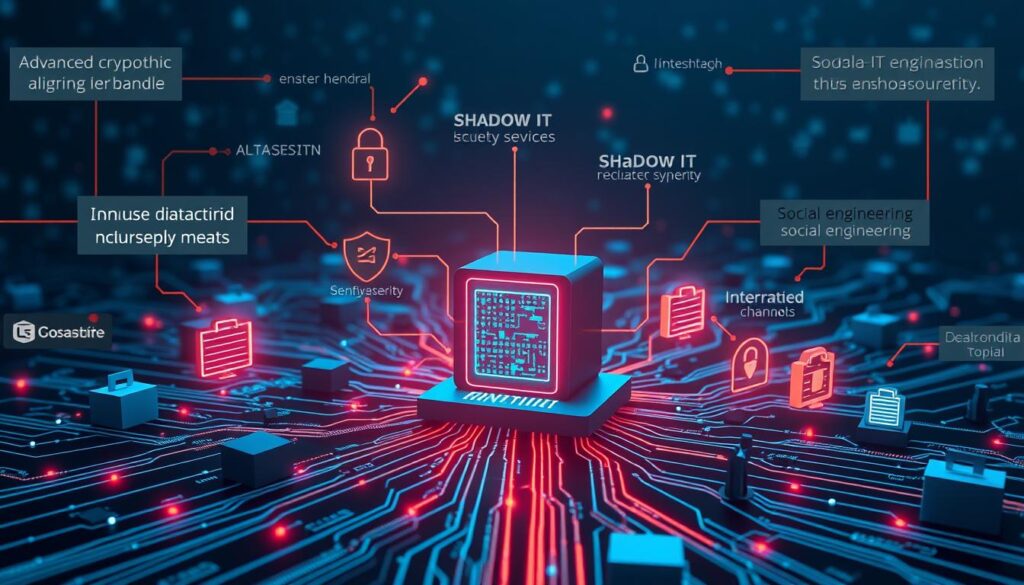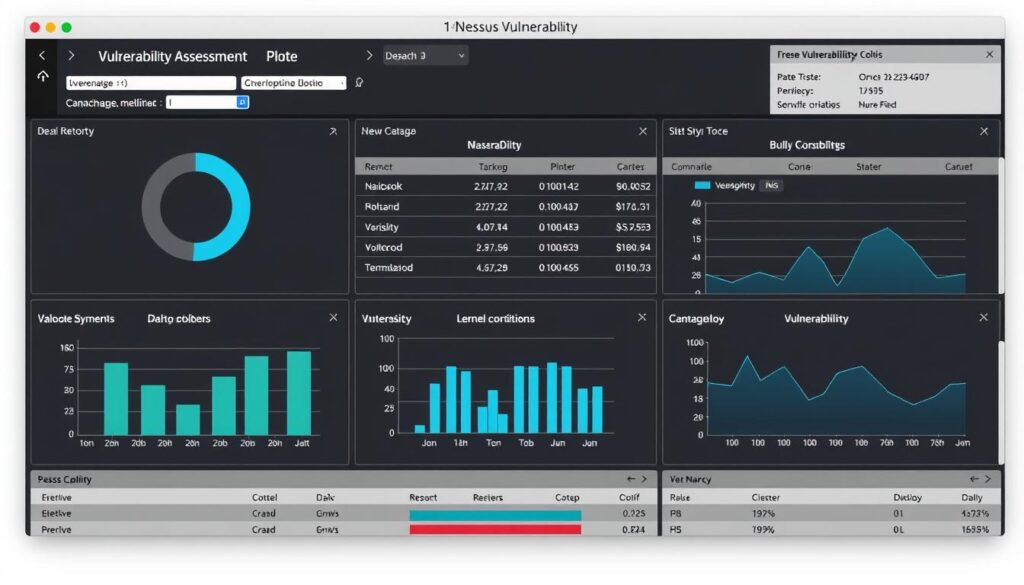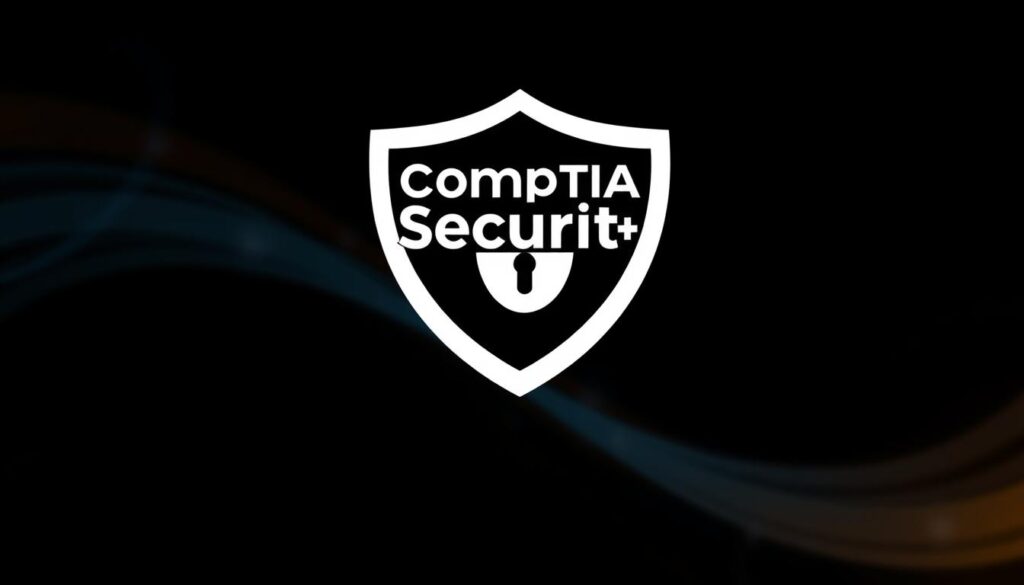Cybersecurity is one of the fastest-growing fields in the tech industry, with the U.S. Bureau of Labor Statistics predicting a 32% employment growth from 2022 to 2032, much faster than the average for all occupations.
This surge is driven by the increasing need for professionals who can protect networks, systems, and data from cyber threats. If you’re looking to get started in this exciting field, you’re on the right track. Learning cybersecurity independently requires dedication and a structured approach, but it’s a viable path to a rewarding career.
With the right resources and guidance, you can acquire the necessary skills to succeed in this field. This guide is designed to help you navigate your learning journey, from understanding the basics of security to positioning yourself for your first job in cybersecurity.
Key Takeaways About Learn Cybersecurity :
- Understand the basics of cybersecurity and its importance in the tech industry.
- Discover the essential knowledge areas and skills required for a career in cybersecurity.
- Learn how to create a personalized learning plan that fits your schedule.
- Explore Springboard’s Cybersecurity Career Track as a structured learning alternative.
- Avoid common pitfalls that self-taught cybersecurity professionals often encounter.
Understanding the Cybersecurity Landscape
As you embark on your journey to learn cybersecurity, it’s essential to understand the current landscape of this rapidly evolving field. Cybersecurity is a multifaceted domain that encompasses various security measures designed to protect digital information, networks, and systems from cyber threats.
What is Cybersecurity and Why It Matters
Cybersecurity refers to the practices, technologies, and processes designed to protect digital information, networks, and systems from cyber attacks. In today’s digital world, cybersecurity is critical because it safeguards sensitive data and prevents financial loss, reputational damage, and legal consequences resulting from data breaches and cyber attacks.
The different domains within cybersecurity include network security, application security, information security, and operational security. Understanding these domains gives you a broad understanding of the cybersecurity field and its various components.
The Growing Demand for Cybersecurity Professionals
The demand for cybersecurity professionals is growing rapidly due to the increasing number of cyber threats and data breaches. This growth creates tremendous opportunities for newcomers to the field, with a diverse range of jobs available, from entry-level security analysts to specialized roles in penetration testing, security architecture, and digital forensics.
The industry is expected to continue growing over the next decade, driven by factors such as increased digitization, regulatory requirements, and evolving threat landscapes. As a result, pursuing a career in cybersecurity can be financially rewarding, with competitive salary ranges compared to other IT roles.
Assessing Your Starting Point
Knowing your strengths and weaknesses is essential for a beginner looking to get into cybersecurity. To effectively start your journey, you need to evaluate your current knowledge and skills honestly.
Required Background Knowledge
To begin learning cybersecurity, you should assess your technical knowledge and identify any gaps you need to fill.
Technical Prerequisites
Essential technical prerequisites include basic networking concepts, familiarity with operating systems, and fundamental programming knowledge. These skills form the foundation upon which you’ll build your security expertise.
Soft Skills That Matter
Beyond technical knowledge, skills like analytical thinking, communication abilities, and a detail-oriented mindset are crucial for security professionals. These soft skills will help you analyze threats and communicate effectively.
Setting Realistic Learning Goals
To stay motivated, it’s vital to set SMART (Specific, Measurable, Achievable, Relevant, Time-bound) learning goals. Break down the vast field of cybersecurity into manageable learning modules that build upon each other logically. This approach will help you understand the fundamentals and stay on track to get cybersecurity knowledge.
Building Your Foundational IT Knowledge
Before diving into cybersecurity, it’s essential to establish a solid foundation in IT. This foundation will serve as the backbone for understanding more complex security concepts. You’ll need to grasp the basics of computer networking, operating systems, and programming to excel in cybersecurity.
Computer Networking Basics
Understanding network fundamentals is critical for a career in cybersecurity. You should be familiar with concepts such as TCP/IP, subnetting, routing, firewalls, and network topologies. These elements form the basis of how data is communicated and secured across networks. Knowing how networks operate will help you identify potential vulnerabilities and implement effective security measures.
Operating Systems Fundamentals
Different operating systems have unique security architectures and vulnerabilities. You should understand how Windows, Linux, and macOS function, including their respective security features and weaknesses. This knowledge will enable you to implement robust security protocols and respond to threats effectively.
Programming and Scripting Essentials
Programming knowledge is increasingly important in cybersecurity. You’ll need to learn languages like Python and scripting tools like Bash to automate security tasks and analyze threats.
Python for Cybersecurity
Python has become a go-to language for cybersecurity automation. It’s used for tasks such as log analysis, penetration testing, and threat hunting. With Python, you can automate repetitive tasks and focus on more complex security challenges.
Bash Scripting
Bash scripting is essential for security professionals working in Linux environments. It allows you to automate command-line tasks, manage systems, and respond to security incidents more efficiently.
By mastering these foundational IT areas, you’ll be well-prepared to tackle advanced cybersecurity concepts and challenges. This knowledge will also help you to choose the right specialization within the cybersecurity field.
Essential Cybersecurity Concepts for Beginners

To build a strong foundation in cybersecurity, you need to understand its core principles. Cybersecurity is a multifaceted field that involves protecting computer systems, networks, and sensitive information from unauthorized access, use, disclosure, disruption, modification, or destruction. This section will introduce you to the fundamental concepts that form the theoretical foundation of cybersecurity.
Understanding Threat Models
A threat model is a structured approach to identifying, evaluating, and prioritizing potential security risks to systems and organizations. By developing and using threat models, you can systematically analyze potential threats and implement effective countermeasures. Threat modeling helps you understand the adversarial mindset and anticipate potential attacks.
Common Attack Vectors
Cyber attackers use various techniques to compromise systems and data. Understanding these common attack vectors is crucial for developing effective security measures.
Social Engineering
Social engineering attacks exploit human psychology rather than technical vulnerabilities. Common techniques include phishing, pretexting, and baiting. These attacks can be highly effective and difficult to detect.
Malware and Ransomware
Malware, including viruses, worms, trojans, and ransomware, can cause significant damage to systems and data. Understanding how malware infects systems and spreads is essential for developing effective defenses.
Network-Based Attacks
Network-based attacks, such as man-in-the-middle, DDoS, and packet sniffing, exploit weaknesses in network protocols and configurations. These attacks can be particularly challenging to mitigate.
- Man-in-the-middle attacks intercept communication between two parties.
- DDoS attacks overwhelm systems with traffic, making them unavailable.
- Packet sniffing involves capturing and analyzing network traffic.
Basic Security Principles
The CIA triad (Confidentiality, Integrity, Availability) is a fundamental security concept that guides security decision-making and implementation. Other key principles include defense-in-depth and the principle of least privilege. These principles help you design and implement robust security measures.
By understanding these essential cybersecurity concepts, you’ll be better equipped to navigate the complex world of cybersecurity and make informed decisions about security practices.
How To Learn Cybersecurity on Your Own: Creating a Structured Path
To master cybersecurity skills, you need to establish a systematic approach to your self-directed learning journey. This involves creating a structured path that guides you through the vast landscape of security concepts and practices.
Developing a structured learning path is essential for maintaining focus and ensuring consistent progress. It helps you navigate through the complex world of cybersecurity, making it easier to achieve your learning goals.
Developing a Learning Schedule
Creating a realistic learning schedule is the first step towards a structured learning path. You need to allocate time that fits your current commitments while ensuring consistent progress in your cybersecurity studies. Effective time management techniques, such as the Pomodoro Technique and spaced repetition, can be particularly helpful.
For instance, you can dedicate specific days of the week to theoretical learning and others to hands-on practice. This balance is crucial for reinforcing your understanding of security concepts.
Balancing Theory and Practical Skills
A well-rounded cybersecurity education requires a balance between theoretical knowledge and practical skills. Theoretical foundations provide the necessary context for understanding security principles, while practical experience helps you apply these principles in real-world scenarios.
To achieve this balance, you can set up lab environments to test the security principles you’ve learned. This hands-on practice reinforces theoretical concepts and enhances your problem-solving skills.
Tracking Your Progress
Tracking your progress is vital for staying motivated and identifying areas that need improvement. You can use digital tools, learning journals, or self-assessment techniques to monitor your advancement in learning cybersecurity.
By regularly assessing your knowledge gaps and adjusting your learning plan accordingly, you can ensure that you’re on the right track to becoming proficient in cybersecurity. This adaptive approach helps you stay focused on your goals and make the most out of your self-directed course of study.
Free and Low-Cost Learning Resources
Embarking on a cybersecurity journey requires access to quality learning resources, and fortunately, numerous free and low-cost options are available.
Online Courses and Tutorials
You can find comprehensive online learning platforms that offer both free and premium cybersecurity courses designed for beginners. Platforms like Cybrary, TryHackMe, and HackTheBox provide interactive learning experiences.
Specific MOOCs (Massive Open Online Courses) from platforms like Coursera, edX, and Udemy offer structured cybersecurity education with certificates of completion.
Books and Documentation
For those who prefer learning through reading, there are essential cybersecurity books for beginners, ranging from broad introductory texts to focused guides on specific security domains like network security or ethical hacking.
Official documentation and technical papers, such as NIST publications, OWASP guides, and vendor security documentation, are also valuable resources.
YouTube Channels and Podcasts
Several educational YouTube channels created by cybersecurity professionals explain complex security concepts in accessible ways.
Informative cybersecurity podcasts can turn your commute or workout time into valuable learning opportunities.
When evaluating these resources, consider the quality and currency of the information to ensure you’re learning the most relevant and up-to-date courses and techniques.
Hands-On Practice Environments
Effective cybersecurity learning involves creating environments where you can practice and hone your skills without risking real-world systems. To develop the skills that employers value, you need to engage in practical learning experiences.
Setting Up a Home Lab
To set up a home cybersecurity lab, you’ll need virtualization software like VirtualBox or VMware. These tools allow you to create isolated networks for testing security concepts. You can configure vulnerable virtual machines, such as Metasploitable and DVWA, to practice attacking and defending.
Capture The Flag (CTF) Competitions
Capture The Flag (CTF) competitions are a great way to develop real-world cybersecurity skills in a gamified environment. These competitions challenge you to identify and exploit vulnerability in deliberately vulnerable systems. You can find beginner-friendly CTF platforms and competitions online.
Vulnerability Scanning Practice
To practice vulnerability assessments, you can use tools like Nessus and OpenVAS. These tools help you identify potential security risks in your practice environment. You can then analyze the assessment reports and prioritize findings based on risk levels, a critical skill for cybersecurity professionals.
By documenting your hands-on practice activities, you can build a portfolio that demonstrates your practical skills to potential employers. This portfolio will be invaluable when you’re ready to transition into a cybersecurity career.
Essential Cybersecurity Tools to Master
To become proficient in cybersecurity, it’s essential to familiarize yourself with the industry-standard tools used daily by professionals. These tools help you develop practical skills that are crucial for a successful career in cybersecurity.
Cybersecurity tools are diverse and serve various purposes, including network security, vulnerability assessment, and security monitoring. Mastering these tools will enable you to analyze network traffic, identify potential vulnerabilities, and detect security incidents.
Network Security Tools
Network security tools are vital for analyzing network traffic, scanning for open ports, and identifying potential vulnerabilities. Some of the best network security tools for beginners include Wireshark, tcpdump, and nmap.

Wireshark is a powerful tool for analyzing network protocols and understanding how data is transmitted across networks. Tcpdump is a command-line tool for capturing and analyzing network traffic. Nmap is used for scanning networks and identifying open ports and services.
Vulnerability Assessment Tools
Vulnerability assessment tools help identify security weaknesses in systems before attackers can exploit them. Popular tools include Nessus, OpenVAS, and Qualys.

These tools scan systems and networks for known vulnerabilities and provide detailed reports on the findings. Understanding how to interpret these reports and prioritize remediation efforts is crucial for maintaining security.
Security Monitoring Tools
Security monitoring tools enable continuous surveillance of systems and networks for potential security incidents. Tools like Splunk, ELK Stack, and Security Onion are widely used for this purpose.
These tools help you detect potential intrusions and suspicious activities in your practice environment. Setting up basic security monitoring and alerting is essential for proactive security management.
In addition to these tools, you’ll also learn about password cracking tools like John the Ripper and Hashcat, which help understand password vulnerabilities. Operating system security tools such as Windows Defender, AppArmor, and SELinux provide host-based protection against various threats.
It’s crucial to use these tools ethically and only on systems you own or have explicit permission to test. This ensures that you’re developing your skills responsibly and legally.
Exploring Cybersecurity Specializations

As you dive deeper into the world of cybersecurity, you’ll discover a multitude of specializations that can align with your interests and career goals. The field is vast and diverse, offering numerous paths to explore. Understanding these specializations can help you focus your learning and career efforts more effectively.
Cybersecurity encompasses various specializations, each addressing different aspects of security and cybersecurity. Let’s explore some of the key areas:
Network Security
Network security involves protecting network infrastructure from unauthorized access and attacks. This includes managing firewalls, intrusion detection/prevention systems, and designing secure network architectures.
Application Security
Application security focuses on securing software applications by identifying and fixing vulnerabilities through secure coding practices and rigorous security testing.
Cloud Security
The rapidly growing field of cloud security deals with applying traditional security concepts to cloud environments and addressing the unique challenges of securing cloud infrastructure.
Security Operations
Security Operations Centers (SOCs) are critical in monitoring, detecting, and responding to cybersecurity incidents in real-time, playing a vital role in an organization’s security posture.
Penetration Testing
Penetration testing, or ethical hacking, involves simulating cyber attacks to identify vulnerabilities before malicious actors can exploit them, helping organizations strengthen their security measures.
Other important specializations include digital forensics and incident response (DFIR), governance, risk, and compliance (GRC) roles, and more. Sampling different specializations during your learning journey can help you discover which areas you find most engaging before committing to a specific path.
- Cybersecurity specializations offer diverse career paths and opportunities.
- Exploring different areas helps in identifying your interests and strengths.
- Each specialization requires unique skills and knowledge.
Cybersecurity Certifications Worth Pursuing
With numerous cybersecurity certifications available, choosing the ones that align with your career goals can significantly impact your professional journey. Cybersecurity certifications are essential for validating your skills and enhancing your employability in the cybersecurity domain. These certifications not only demonstrate your expertise but also show your commitment to staying updated with the latest security practices.
Entry-Level Certifications
For those starting their cybersecurity journey, entry-level certifications like CompTIA Security+ are highly recommended. CompTIA Security+ is particularly valuable for beginners as it covers a broad range of security concepts and is widely recognized as an entry point into the field. The certification exam content includes network security, compliance, and operational security, among other topics.

Other notable entry-level certifications include CompTIA Network+, Cisco’s CCNA Security, and Microsoft’s security fundamentals certifications. These certifications provide a solid foundation for understanding cybersecurity principles and are often considered stepping stones to more advanced certifications.
Specialized Certifications
As you progress in your cybersecurity career, you may want to pursue specialized certifications that align with your career path. For instance, the Certified Ethical Hacker (CEH) certification is ideal for those interested in penetration testing, while the Certified Information Systems Security Professional (CISSP) is geared towards security management professionals.
Specialized certifications not only enhance your skill set but also demonstrate your expertise in specific areas of cybersecurity. When choosing a certification, consider factors such as certification costs, preparation time, and renewal obligations to ensure they align with your career goals and resources.
Building a Cybersecurity Portfolio
As you progress in your cybersecurity journey, creating a portfolio that showcases your skills becomes essential. A well-structured portfolio demonstrates your practical abilities to potential employers, even without professional experience. It allows you to showcase your projects and the skills you’ve developed through hands-on practice.
Documenting Your Projects
Effective documentation is crucial for showcasing your projects. You should clearly communicate your project objectives, methodologies, findings, and security recommendations. To achieve this, consider the following practices:
- Write detailed technical reports that balance technical depth with accessibility for various audiences.
- Document your learning journey through blog posts or write-ups that demonstrate your growing cybersecurity knowledge.
- Create comprehensive guides or tutorials on implementing security measures or using specific software.
Creating a GitHub Repository
GitHub is a powerful platform for showcasing your projects and code. To create a professional GitHub profile:
- Organize your repositories to highlight your best work.
- Include clear documentation and README files for each project.
- Share your security tools, scripts, and other relevant code.
Overcoming Common Learning Challenges
Learning cybersecurity on your own can be daunting, but with the right strategies, you can overcome common obstacles and achieve your goals. As you progress in your journey to acquire cybersecurity skills, you’ll encounter various challenges that can hinder your progress if not addressed properly.
One of the primary challenges you’ll face is information overload. The field of cybersecurity is constantly evolving, with new vulnerabilities, attack techniques, and defensive measures being discovered daily. To manage this, it’s essential to prioritize your learning topics based on their foundational importance and relevance to your career goals.
Managing Information Overload
To deal with the vast amount of information available, focus on learning cybersecurity fundamentals first. Break down complex topics into manageable components, and use resources like online courses, tutorials, and documentation to stay updated. Creating a structured learning schedule can also help you stay on track.
Staying Motivated Through Difficult Concepts
When faced with difficult technical subjects, it’s easy to feel overwhelmed. Techniques like the Feynman Technique can help simplify complex ideas by explaining them in simple terms. Additionally, joining security communities and forums can provide support and motivation. Sharing your challenges and progress with others on similar journeys can help you stay motivated and build confidence in your growing skills.
By implementing these strategies, you can overcome common learning challenges and continue to make progress in your cybersecurity education.
Networking and Community Engagement
As you navigate your cybersecurity journey, connecting with professionals and engaging with the community can be a game-changer. Building meaningful connections in the field can lead to new opportunities, provide valuable insights, and help you stay updated on the latest trends.
Joining Cybersecurity Communities
You can start by joining online cybersecurity communities where professionals share knowledge, discuss trends, and sometimes post job opportunities. Platforms like Reddit’s r/cybersecurity, Discord servers, LinkedIn groups, and specialized forums are great places to engage with the security community. To participate effectively, ask thoughtful questions, share your learning experiences, and contribute helpful information when possible.
Attending Virtual Events and Webinars
Attending virtual cybersecurity events, webinars, and conferences provides both learning opportunities and networking possibilities. To make the most of these events, prepare by researching the speakers and topics, and engage with other attendees through Q&A sessions or chat forums. This can help you build a professional online presence and potentially advance your career in the industry.
Springboard’s Cybersecurity Career Track
Springboard’s Cybersecurity Career Track offers a guided learning experience that combines flexibility with personalized support. This comprehensive program is designed to equip you with the technical skills and career development needed to succeed in roles like Cybersecurity Analyst, Security Engineer, and SOC Analyst.
Program Structure and Benefits
The program’s curriculum covers both technical skills and career development, preparing you for a successful cybersecurity career. You’ll benefit from one-on-one mentorship from industry professionals, career coaching, and job-focused projects that build a compelling portfolio.
With a flexible schedule, you can learn at your own pace while still having structure and accountability through regular mentor check-ins. This approach allows you to balance the program with existing work and personal responsibilities.
Success Stories and Outcomes
Many career-changers have used Springboard’s Cybersecurity Career Track to transition into the field from various backgrounds. Graduates have landed cybersecurity positions at notable companies and organizations, thanks to the program’s job guarantee and money-back promise.
By providing a comprehensive education and support, Springboard’s Cybersecurity Career Track has helped numerous individuals achieve their career goals in security and beyond.
Transitioning to a Cybersecurity Career
With your newfound cybersecurity skills, you’re ready to take the leap into the job market. Transitioning to a cybersecurity career involves understanding the available roles, crafting a compelling resume, and preparing for the job search process.
Entry-Level Cybersecurity Roles
Several entry-level positions are available for those starting a cybersecurity career. You can consider roles like Security Operations Center (SOC) Analyst, Junior Security Analyst, or IT Support Specialist with security responsibilities. These positions involve monitoring security threats, analyzing incidents, and implementing protective measures.
As a cybersecurity analyst, you’ll be responsible for safeguarding an organization’s digital assets. You’ll need to stay updated on the latest security threats and technologies to effectively perform your job.
Creating a Cybersecurity-Focused Resume
Crafting a resume that highlights your cybersecurity skills is crucial. Focus on including relevant projects, certifications, and any practical experience you’ve gained. Tailor your resume to showcase your understanding of security principles, threat analysis, and mitigation strategies.
To land a cybersecurity job, your resume should demonstrate your ability to apply theoretical knowledge in real-world scenarios. Highlighting transferable skills and a commitment to continuous learning can also make your application more attractive to potential employers.
Conclusion About Learn Cybersecurity :
With the right approach and mindset, you can unlock a world of opportunities in cybersecurity, a field that’s both challenging and rewarding.
Learning cybersecurity on your own is absolutely achievable with persistence and the right resources. The field offers exceptional career opportunities, combining high demand, competitive salaries, and meaningful work protecting critical data and systems.
A successful self-learning journey in cybersecurity involves building foundational knowledge, specializing, and demonstrating your skills through projects and certifications. Hands-on practice and continuous learning are crucial in this evolving field, with new threats, technologies, and defensive techniques emerging constantly.
Embracing the cybersecurity community is vital for knowledge, support, and professional opportunities throughout your career. While self-directed learning presents challenges, many successful cybersecurity professionals have taken this path before you.
Whether you’re just starting out or ready to apply for your first security role, the key is to stay motivated and keep moving forward. If you prefer a more guided approach, Springboard’s Cybersecurity Career Track offers a structured alternative with personalized support.
As you continue on your cybersecurity journey, remember that every step you take brings you closer to a fulfilling career with numerous job opportunities, including various cybersecurity jobs that can help you land job and explore different career paths in the cyber world.
![How To Learn Cybersecurity on Your Own [Beginner's Guide] - Springboard](https://www.an-coool.com/wp-content/uploads/2025/04/How-To-Learn-Cybersecurity-on-Your-Own-Beginners-Guide-Springboard.jpeg)